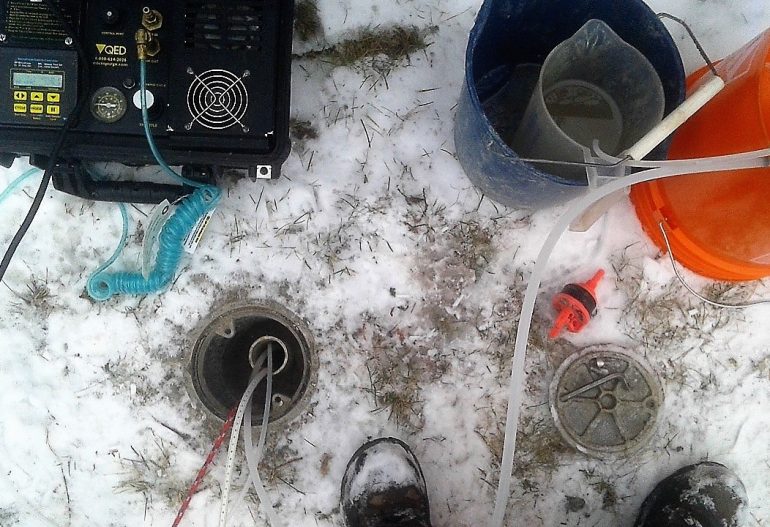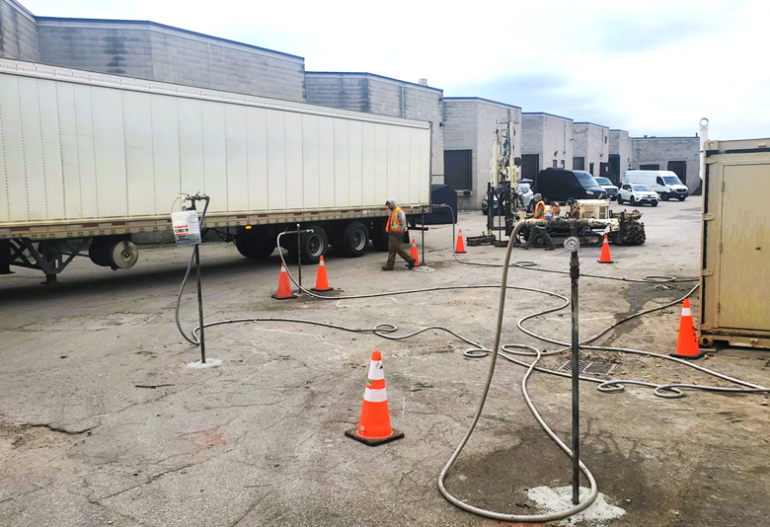Groundwater contamination on a property can originate from on-site soil impacts, past spills or migration from neighbouring sites. While groundwater impacts often occur on sites with contaminated soil, they can also be present even when soil meets applicable concentration limits.
The Significance of Groundwater Contamination
When evaluating environmental risk on a property, it’s essential to understand the key differences associated with groundwater contamination:
AEL’s Strategic Approach to Groundwater Remediation
Groundwater remediation begins by understanding the sources and types of contamination. Our team of remedial specialists will start with a review of available information and will typically ask if any available environmental reports are available for the property, such as a Phase One Environmental Site Assessment (ESA), Phase Two ESA, or other environmental reports that may identify a need for remediation on a site.
If additional information is required, a site investigation designed specifically to provide the information necessary to support remedial design will be proposed.
Once groundwater contamination is adequately characterized, AEL’s team of engineers and scientists collaborate to design a Remedial Action Plan (RAP) for the site. A RAP may vary depending on your needs and can be a short, high level cost estimate, or an in-depth review and assessment of all potentially applicable remediation strategies.

Some of the groundwater remediation practiced by AEL include:
- Hydraulic Containment: Often referred to as pump-and-treat groundwater remediation, this traditional method relies on pumping groundwater from extraction wells, and sometimes underground flow-barrier walls, to capture the groundwater contamination and prevent it from migrating off-site.
- Permeable Reactive Barrier (PRB): A barrier of material is injected underground which reacts with and remediates contaminated groundwater as it flows through.
- Source Treatment Remediation: Cuts off the flow contamination by removing its source. This is often done in conjunction with soil remediation, as soil contamination often acts as a source of groundwater contamination.
- Plume Remediation: Rather than install a PRB or remediate the source, sometimes the overall area of groundwater contamination (technically referred to as a “plume” of contamination) also requires cleanup. A large range of remedial strategies are applicable to plume cleanup.
- Phase Change Remediation: Often used if the contaminant is volatile and can pose a risk for vapour intrusion into buildings. Relies on extracting vapours that off-gas from the groundwater.
Why Choose AEL?
AEL has a multidisciplinary team of experienced environmental specialists includes engineers, hydrogeologists, scientists and Qualified Persons (QPs) under O.Reg 153/04 with years of experience in design and implementation of remediation. AEL’s team prioritizes your goals and can work with you to determine the best groundwater remediation strategy for your property.
Ready to take the next step towards remediating your property? We invite you to discuss your site-specific goals and situation with our team of experts.

Want to Learn More About Our Innovative Remediation Techniques?
25 Years of Innovation in Environmental Site Remediation

Dig deeper into some of the most important innovations in the field of environmental remediation.
Case Study: In-Situ Chlorinated Solvent Remediation of an Industrial Site

A TCE-impacted industrial site required soil and groundwater remediation to preserve business operations, protect human health and enable its sale.

Every Property Has a History, We Can Help You Interpret the Past to Prepare for the Future
AEL environment is focused on creating tailored solutions based on your end goals for each property. Let’s talk, and our team will guide you through the process.
Our Process
-

1. Discover
Every property is unique. We will listen carefully and seek clarity to ensure we understand your site’s unique details and goals.
-

2. Identify
We will recommend an optimal approach, innovative and cost-effective services and solutions for your site, focused on achieving your desired outcome.
-

3. Analyze
Once authorized, we will complete the required research, testing, consulting or reports to required standards. We take the time to review any results and reports together.
